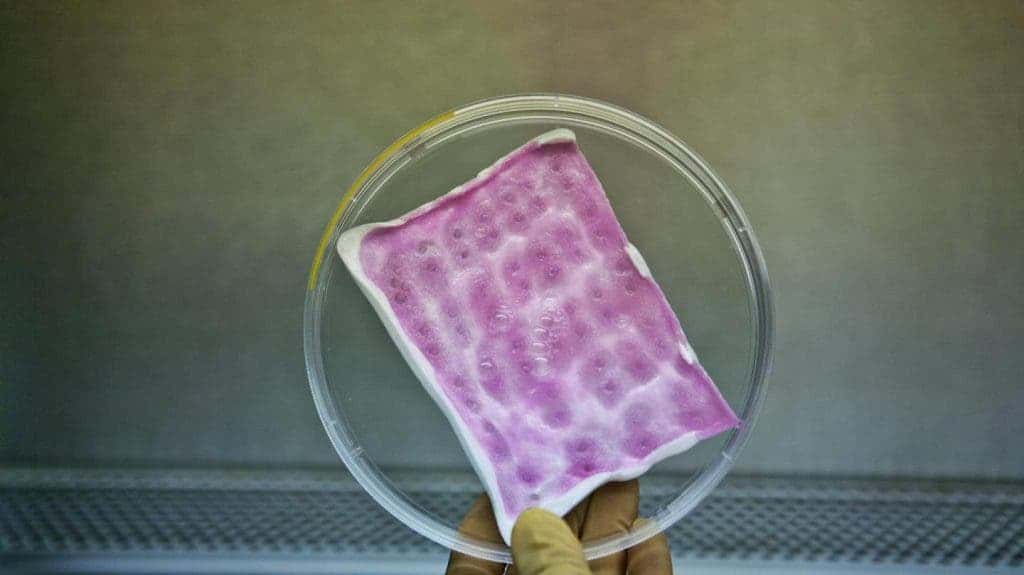Medicine has developed hugely when it comes to treating burn victims. Thanks to progress in the intensive care, the survival rate is much higher now than a few decades ago. However, one area in which we still struggle is bacterial infection. The bandages used to treat burns can be a real breeding ground for bacteria, and dangerous bacterial infection can occur even months after the injuries. Now, Swiss researchers may have a better solution.
The bandage consists of a strip of gauze made from collagen to which progenitor cells and dendrimers have been added. Dendrimers are a new class highly-branched polymers. When the bandage is applied, some of the dendrimers stay inside the bandage, while others reach out in the vicinity of the bandage to kill the bacteria.

CREDIT Murielle Michetti
“Bandages are a favorable environment for bacterial growth,” said Dominique Pioletti, the head of EPFL’s Laboratory of Biomechanical Orthopedics. “So some dendrimers have to remain in the bandage to destroy any intruders.” With his team, the researcher’s task was to find a way to incorporate dendrimers in the biological bandage. He then observed how the bacteria interacted with the new bandage.
The bandage will prevent the bacteria from multiplying, while also accelerating the scarring process. They focused specifically on killing the bacterium Pseudomonas aeruginosa, the main cause of infections and death among serious burn victims.
For victims, this technology couldn’t come soon enough.
“Currently, we have to take enormous precautions with our patients,” said Lee Ann Laurent-Applegate, the head of the Regenerative Therapy Unit at the CHUV. “The bandages, which sometimes cover most parts of the body, need to be changed every day for several months. Yet that does not stop infections. And we cannot prescribe antibiotics to all patients as a preventive measure for fear of making the bacteria more resistant. With the new bandages, rather than treating infections, we will be preventing them. We are nipping the problem in the bud.”






